-
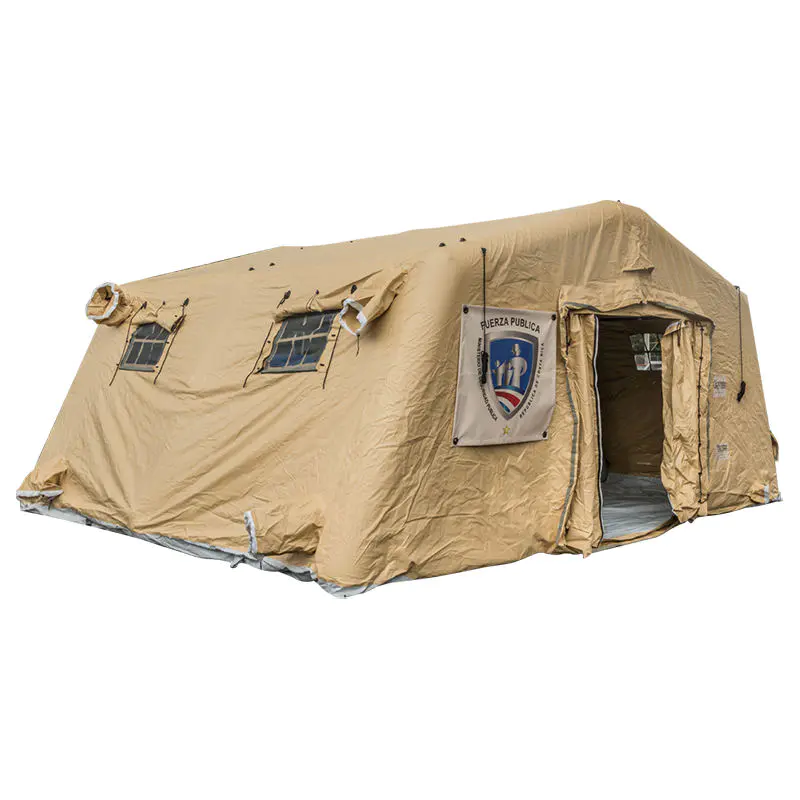 5.6x5.15m Multipurpose Small Rapid Deployment Low-Pressure Inflatable Shelters
5.6x5.15m Multipurpose Small Rapid Deployment Low-Pressure Inflatable SheltersInflatable Relief/Emergency Tent
-
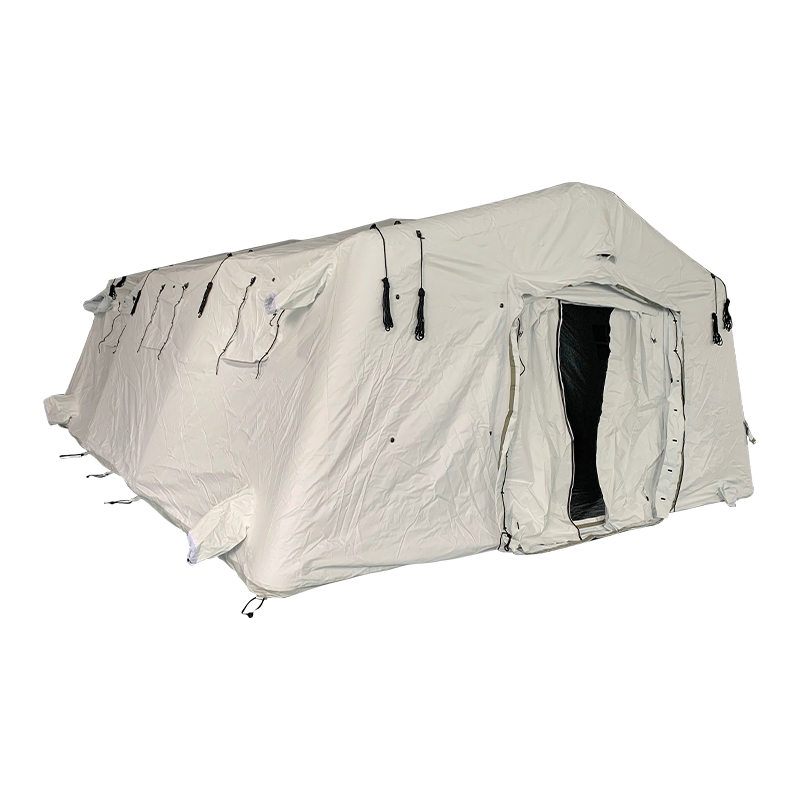 Low-Pressure 5.6x7.55m Multipurpose Medium Rapid Deployment Inflatable Tent
Low-Pressure 5.6x7.55m Multipurpose Medium Rapid Deployment Inflatable TentInflatable Relief/Emergency Tent
-
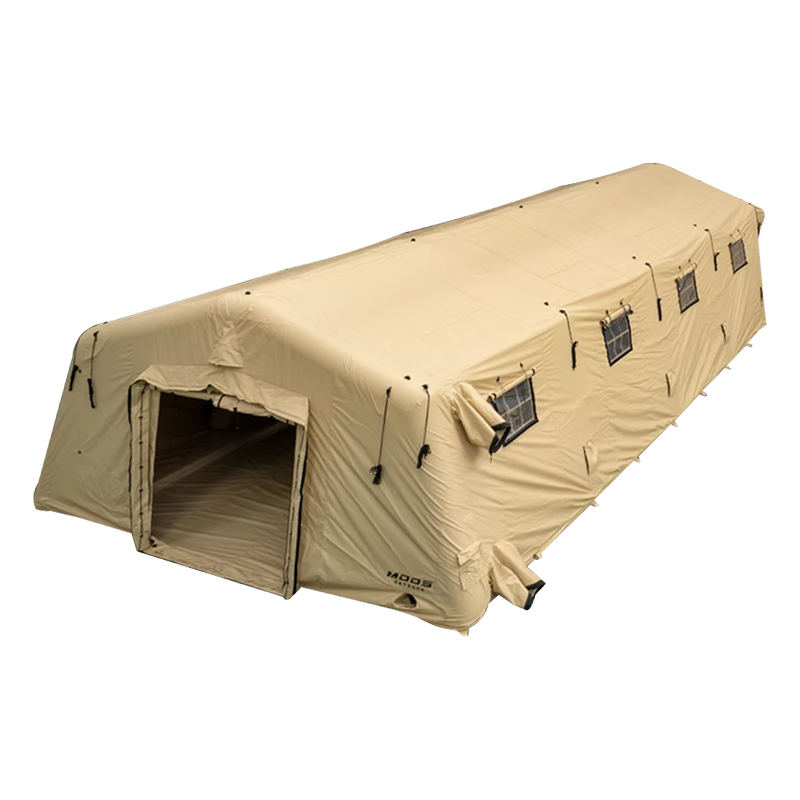 5.6x9.95m Multipurpose Medium Rapid Deployment Shelter Low-Pressure Inflatable Tent
5.6x9.95m Multipurpose Medium Rapid Deployment Shelter Low-Pressure Inflatable TentInflatable Relief/Emergency Tent
-
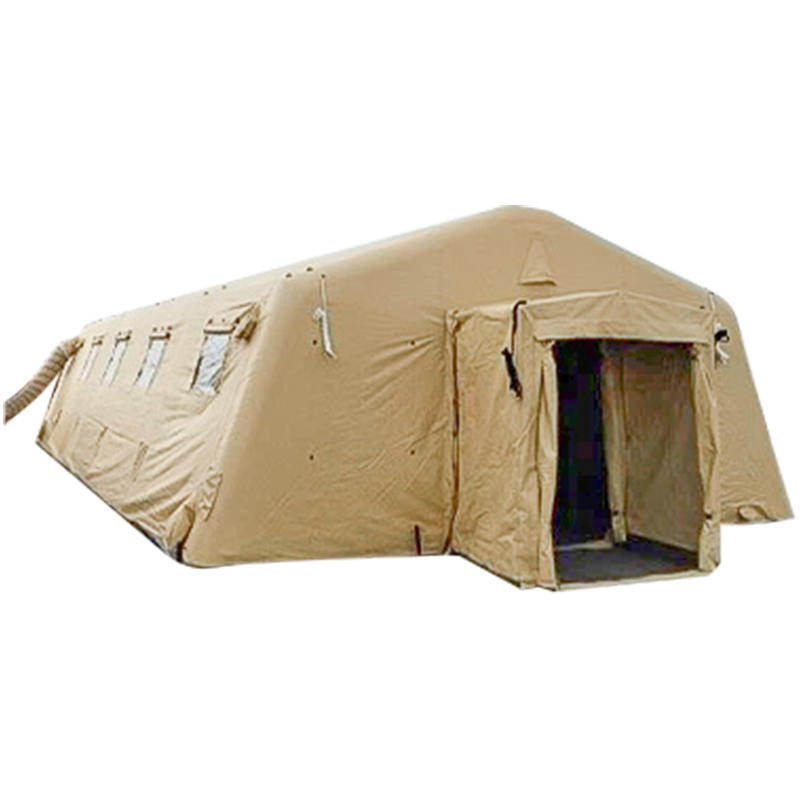 Low-Pressure 5.6x12.35m Multipurpose Large Inflatable Quick Deploy Airtight Tent
Low-Pressure 5.6x12.35m Multipurpose Large Inflatable Quick Deploy Airtight TentInflatable Relief/Emergency Tent
-
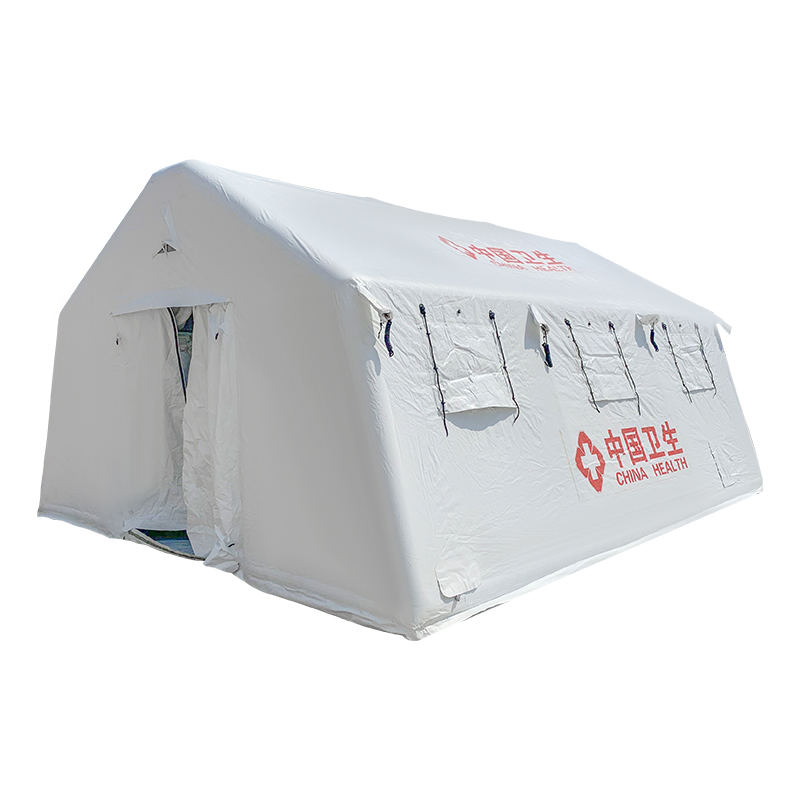 30 m² Red-Cross Dispensary Inflatable Tent
30 m² Red-Cross Dispensary Inflatable TentInflatable Relief/Emergency Tent
-
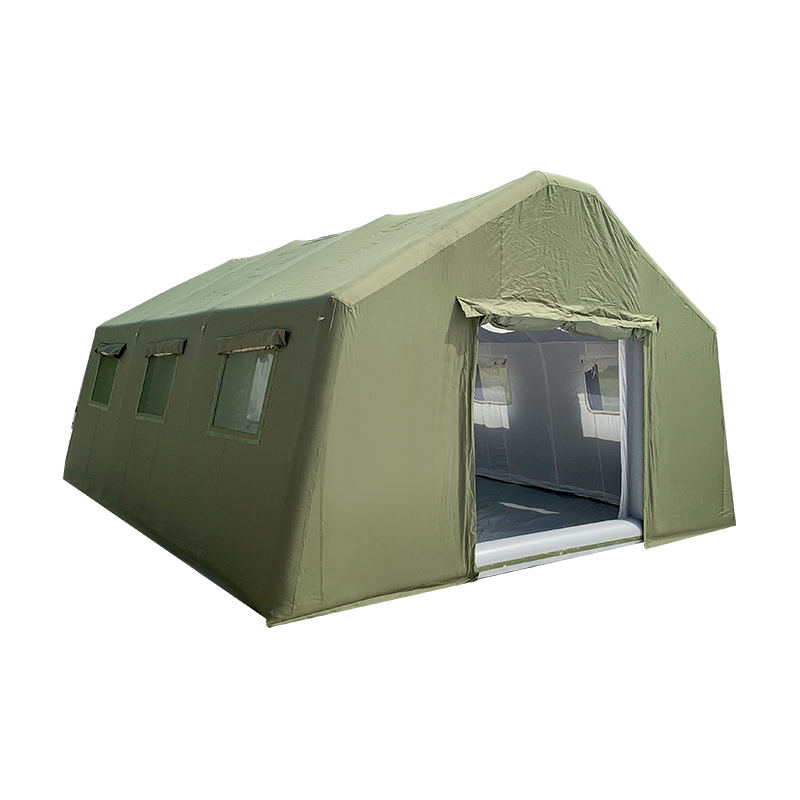 30 m² Rapid Deployment Military Command Inflatable Tent
30 m² Rapid Deployment Military Command Inflatable TentInflatable Relief/Emergency Tent
-
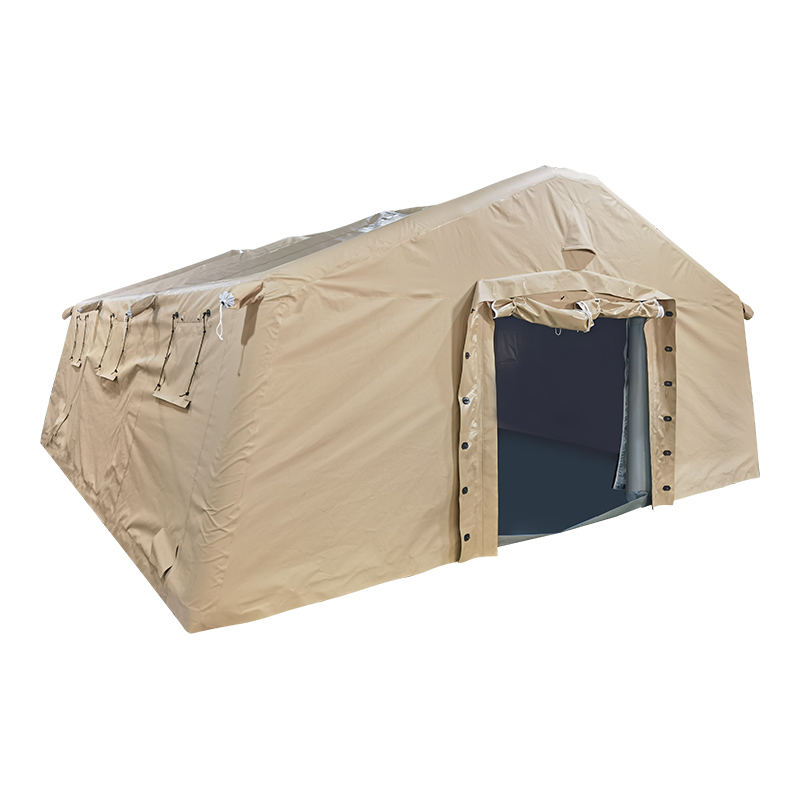 42 m² Rapid Deployment Multi-Purpose Inflatable Tent
42 m² Rapid Deployment Multi-Purpose Inflatable TentInflatable Relief/Emergency Tent
-
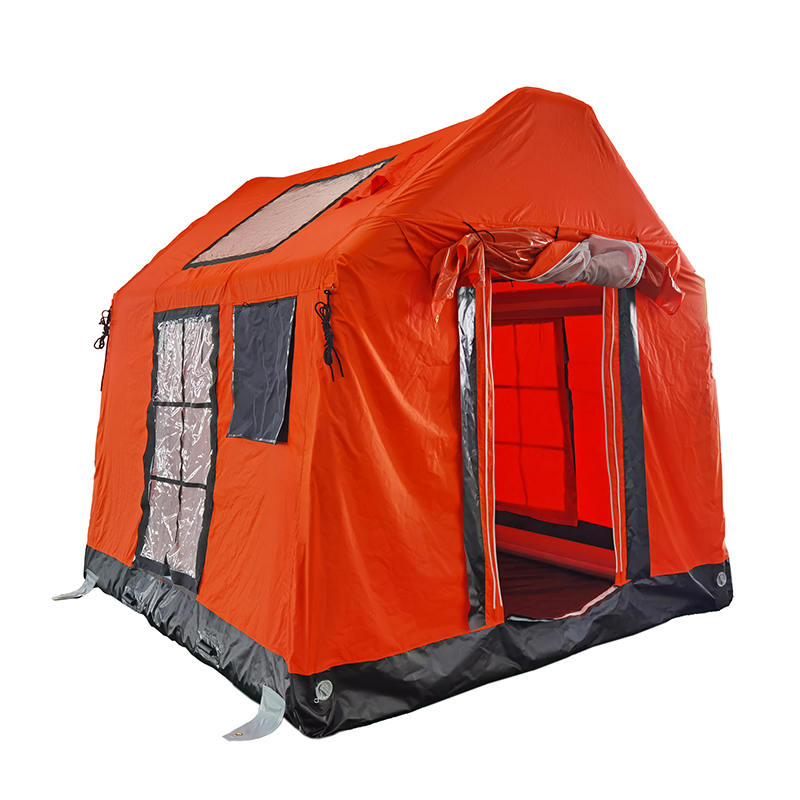 2-4 Person Four Season Glamour Inflatable Camping Tent
2-4 Person Four Season Glamour Inflatable Camping TentInflatable Camping Tent
-
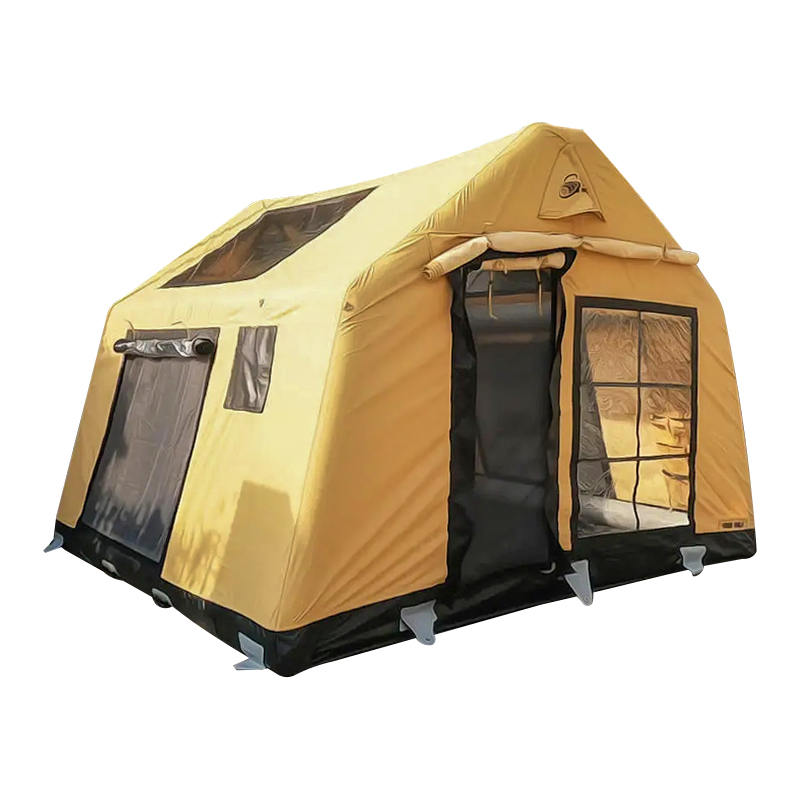 8-10 Person Four Season Glamour Fireproof and Anti-Bacterial Inflatable Camping Tent
8-10 Person Four Season Glamour Fireproof and Anti-Bacterial Inflatable Camping TentInflatable Camping Tent
-
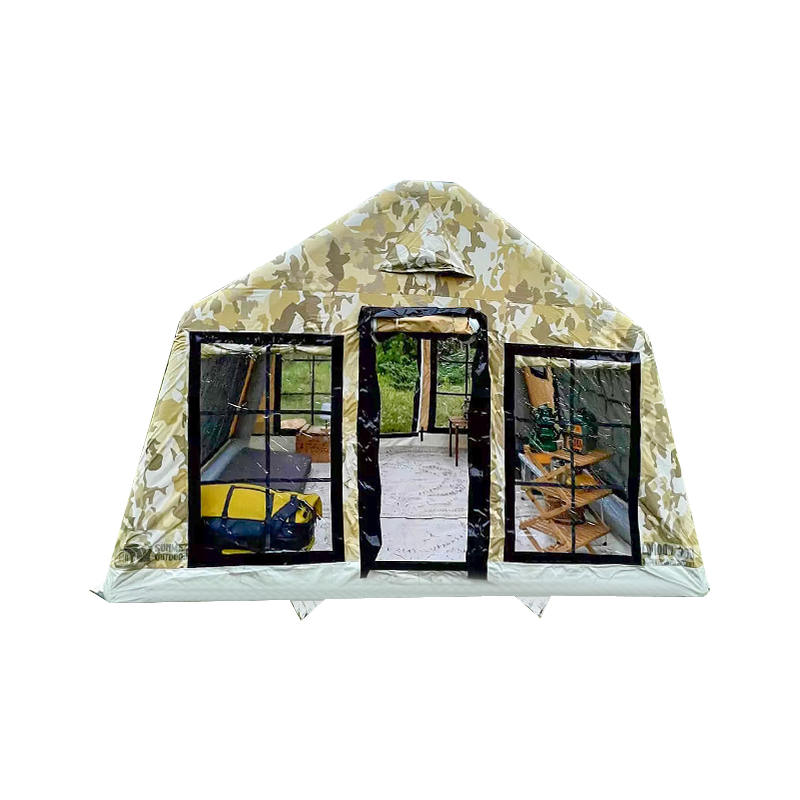 8-10 Person Four Season Panorama Inflatable Camping Tent
8-10 Person Four Season Panorama Inflatable Camping TentInflatable Camping Tent
-
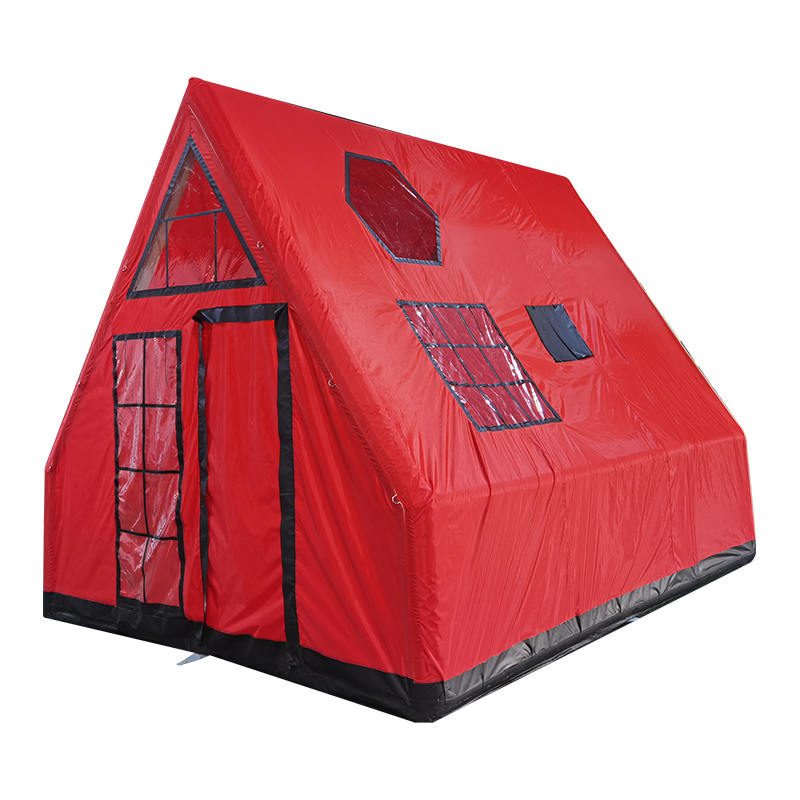 8-10 Person Four Season Waterproof Inflatable Air Tent for Camping
8-10 Person Four Season Waterproof Inflatable Air Tent for CampingInflatable Camping Tent
-
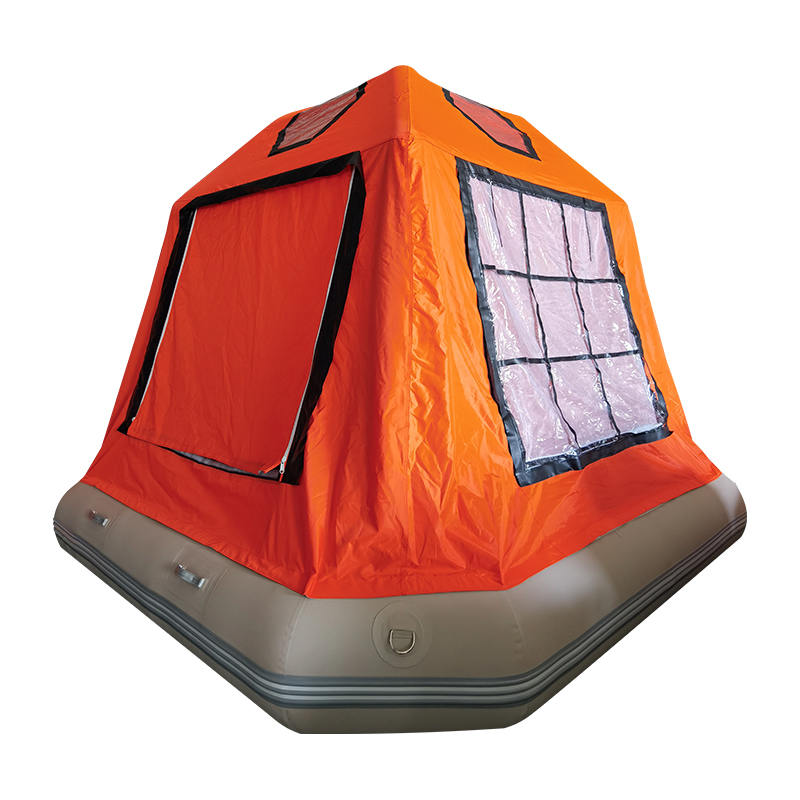 4 Person Floating Inflatable Tent
4 Person Floating Inflatable TentInflatable Camping Tent
Inflatable Tent Suppliers
Products & Solutions
CONTACT US
-

+86 15695147631
-

-

No.9 Kangmin Road, Automobile industry Park, Yizheng City, Jiangsu Province, China
Inflatable tents, also known as air tents which offer a modern alternative to traditional pole tents, providing ease of setup, enhanced stability, and a range of advantageous features.
Inflatable tents use air-filled beams instead of traditional poles. These beams are pumped up using an air pump, creating a stable and robust structure that remains inflated throughout the usage. The concept is simple but offers several benefits over conventional tents, making inflatable tents increasingly popular among different usages worldwide, such as camping, emergency, relief, etc.
Advantages of Inflatable Tents
1. Easy and Quick Setup
One of the significant advantages of inflatable tents is how easy and quickly they are to set up. Unlike traditional pole tents, which often require several people and a fair bit of time to assemble, inflatable tents can typically be pitched by a single person in a matter of minutes.
2. Improved Stability and Durability
Inflatable tents are designed to be highly stable, even in challenging weather conditions. The air beams provide a level of flexibility that traditional poles lack, allowing the tent to withstand strong winds without the risk of breaking or bending poles. This flexibility makes inflatable tents a great option for camping in unpredictable weather.
3. Enhanced Comfort and Space
Inflatable tents often provide more usable space than traditional pole tents. The air beams create a more uniform shape, maximizing interior space without compromising stability. Additionally, many inflatable tents come with multiple rooms, large living areas, and additional features like panoramic windows, built-in groundsheets, and improved ventilation, offering a more comfortable experience.
4. Compact and Lightweight Design
Despite their size and durability, inflatable tents are often lightweight and easy to transport. They pack down into compact bags that fit conveniently into car boots, making them an excellent choice for family camping trips, festivals, quick weekend getaways, or emergency deploy. Our inflatable tents are designed with portability in mind, ensuring that they are easy to carry and store without sacrificing comfort or functionality.
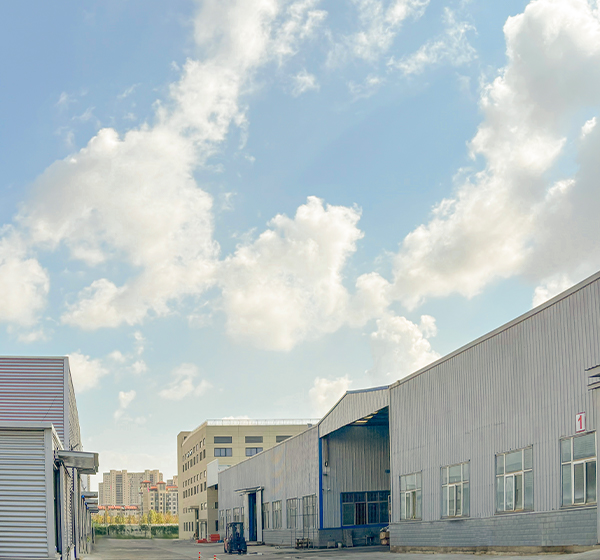
-
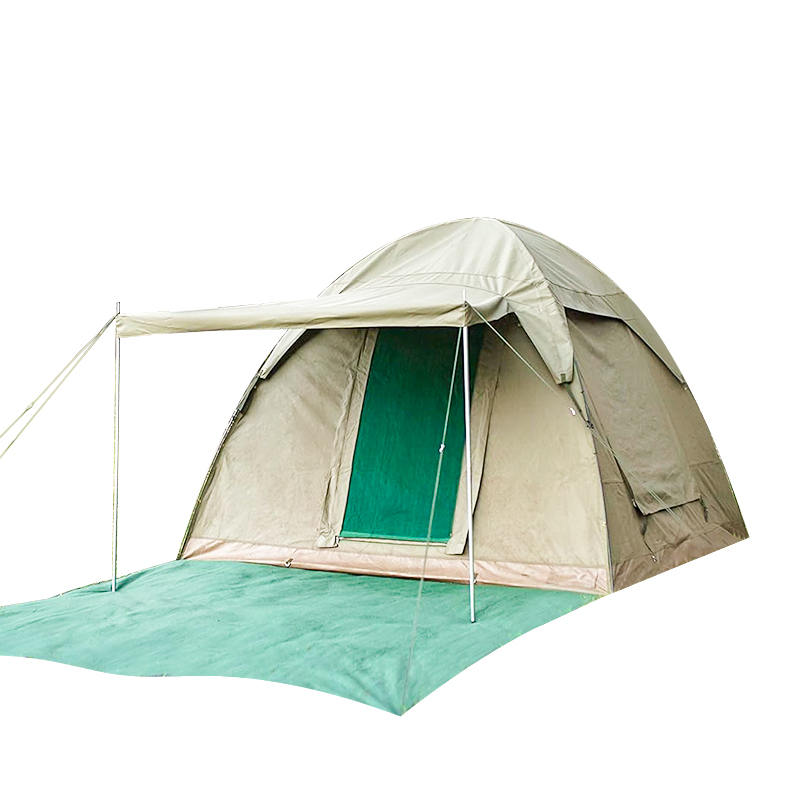
What Do Waterproof Ratings for Camping Backpacking Tents Actually Mean? Waterproof ratings (measured in millimeters, mm) quantify a tent’s ability to resist water penetration, base...
READ MORE -
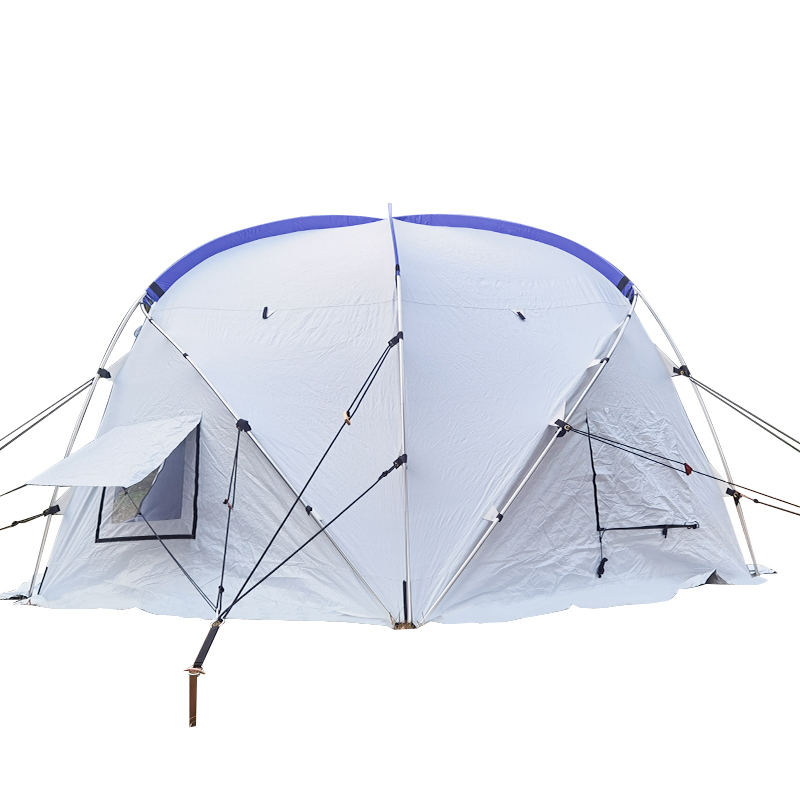
What core fabrics lay the foundation for windproof and waterproof relief tent? The windproof and waterproof performance of relief tent starts with the selection of core fabrics, wh...
READ MORE -
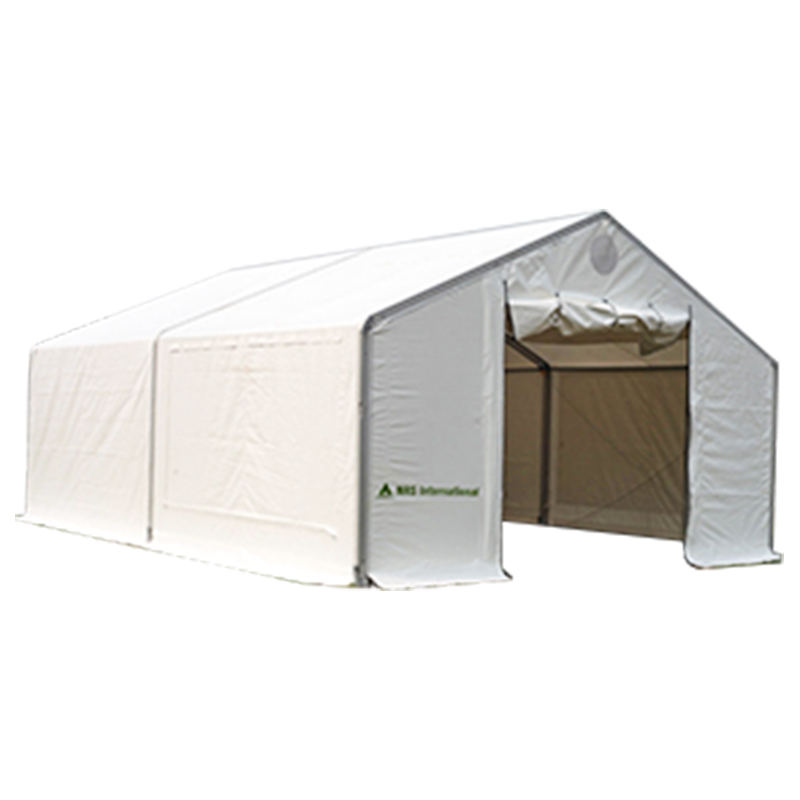
What Cost Advantages Make Warehouse Tents More Economical Than Traditional Warehouses? The core appeal of warehouse tents lies in their significant cost savings, which can reach up...
READ MORE -
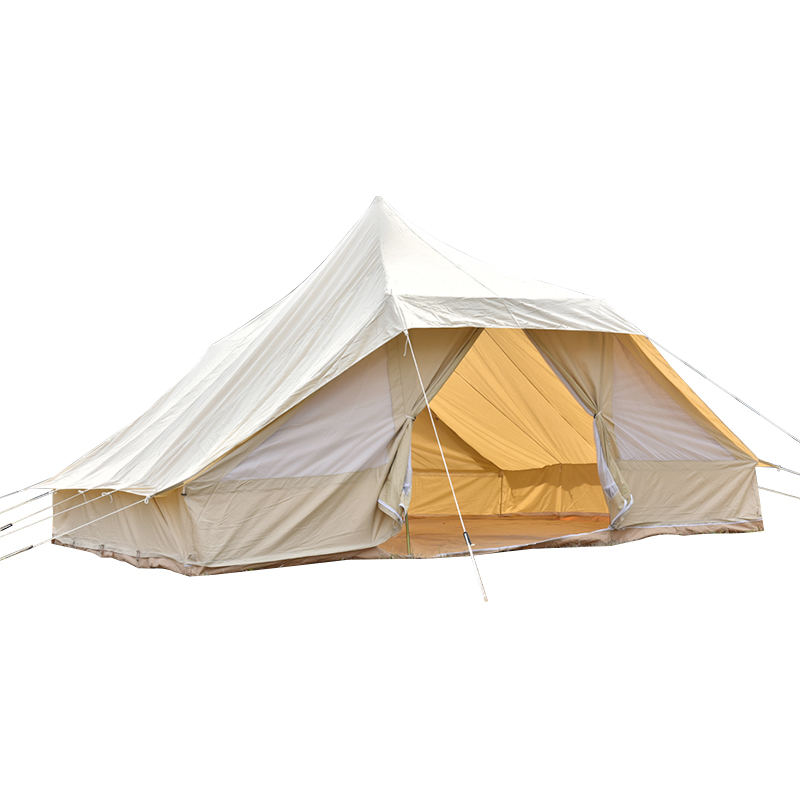
Camping in extreme weather—whether it’s heavy rain, strong winds, freezing snow, or scorching sun—requires a tent that can stand up to harsh conditions while keeping campers safe a...
READ MORE
I. Basic Definition and Core Features of Inflatable Tents: What are the Key Differences from Traditional Tents?
An inflatable tent, or inflatable tent, is a type of tent that expands and takes shape through inflation. Its core features revolve around its "inflatable structure." Compared to traditional frame tents, it eliminates the need for complex metal bracket assembly and can be quickly inflated using an inflation valve, significantly improving setup efficiency. When folded up, it is smaller and lighter, making it easier to transport and carry. However, it does rely on the inflation system and requires reinforcement to ensure stability in extremely strong winds, significantly different from traditional tents that rely on a frame for support.
II. What are the commonly used fabric materials for inflatable tents, and how do different materials affect their performance?
The fabric material of an inflatable tent directly determines its waterproofness, durability, and applicable applications. Mainstream materials include PVC-coated fabric, TPU, and polyester. PVC-coated fabric is highly waterproof and tear-resistant, offering excellent resistance to moderate to heavy rain. It's also relatively affordable and suitable for most temporary outdoor scenarios. TPU is environmentally friendly, non-toxic, and cold-resistant, resisting hardening and cracking in low-temperature environments. It's also lighter than PVC, though slightly more expensive. Polyester offers excellent breathability and is suitable for use in warm, non-rainy environments, but is less waterproof. Yangzhou Mailenda Outdoor Products Co., Ltd., with over 20 years of industry experience, has a precise understanding of the properties of various fabrics and can tailor the material to suit specific needs.
III. What are the ways to inflate an inflatable tent? What are the advantages and disadvantages of each method?
Inflatable tents are primarily inflated manually or electrically. Manual inflation relies on a manual air pump, which doesn't require a power source. It's suitable for remote outdoor locations without power. Manual air pumps are also compact and portable, but the inflation process is time-consuming and physically demanding. Electric inflation uses an electric air pump, which is fast and labor-saving, making it particularly suitable for larger inflatable tents. However, if used in areas without power, it requires a power bank or generator, which presents certain limitations. Additionally, some high-end inflatable tents are equipped with automatic inflation valves for rapid, automatic inflation, further enhancing convenience, but also at a higher cost.
IV, what scenarios are inflatable tents suitable for, and what are the specific performance requirements for different scenarios?
Inflatable tents have a wide range of applications, including outdoor camping, emergency rescue, commercial activities, military training, and more. For outdoor camping, tents must be lightweight, easy to carry, breathable, and able to withstand light rain. For emergency rescue, they must be quick to set up, waterproof, and stable in complex terrain (such as muddy and rugged surfaces). In some cases, they also need to be flame-retardant. For commercial activities (such as exhibitions and promotions), inflatable tents have higher requirements for design and space, and some also require light transmittance. For military training, they must be strong, durable, windproof, and able to withstand extreme temperatures, including high and low temperatures. Yangzhou Mailenda Outdoor Products Co., Ltd.'s inflatable tents, with their mature production processes and customization capabilities, can meet the performance requirements of various scenarios and have served customers in various fields.
V. What precautions should be taken for daily maintenance of inflatable tents, and how can their lifespan be extended?
Daily maintenance of inflatable tents is crucial to extending their lifespan, focusing on fabric protection, inflation system maintenance, and storage. After use, promptly clean any stains and debris from the fabric surface. If oily, gently wipe with a neutral detergent. Avoid using harsh detergents that may damage the fabric coating. Regularly inspect the inflation valve and pump to ensure they are properly sealed and leak-free. Store the pump properly to avoid moisture or damage from impact. Allow the tent to dry completely before storing to prevent moisture-induced mold and mildew. Avoid folding the tent too forcefully to prevent creases and cracks. Furthermore, when not in use for extended periods, store the tent in a dry, well-ventilated environment away from direct sunlight to prevent fabric aging.
VI: What parameters should I pay attention to when choosing an inflatable tent? How can I judge product quality?
When choosing an inflatable tent, consider parameters such as fabric thickness, waterproof rating, wind resistance, stability after inflation, and the quality of the inflation system. Fabric thickness is typically measured in ounces or millimeters. Thicker fabrics generally offer greater tear resistance. Waterproofness is measured in millimeters of water column (mmH₂O). Higher values indicate better waterproofing. For everyday outdoor use, we recommend choosing a product with a waterproof rating of at least 1500 mmH₂O. Wind resistance should be determined by the wind rating indicated on the product label, and products with appropriate wind resistance should be used for different scenarios. Stability after inflation can be assessed by the base anchoring method (such as the number and quality of ground spikes and wind ropes). For the inflation system, check the tightness of the inflation valve, the efficiency of the air pump, and its durability. Additionally, consider whether the product has relevant quality certifications (such as ISO 9001 quality management system certification) and the manufacturer's industry experience (for example, Yangzhou Mailenda Outdoor Products Co., Ltd. has over 20 years of industry experience and a proven track record of product quality) to comprehensively assess product quality.
VII. What common problems may arise with an inflatable tent, and how can they be quickly resolved?
During use, an inflatable tent may experience common problems such as air leaks, fabric damage, and pump failure. If a leak occurs, first close the inflation valve. Then, apply soapy water to the seams of the tent and around the valve. Observe the location of bubbles to locate the leak. Small leaks can be repaired with special patching adhesive and adhesive sheets. Larger leaks require contacting the manufacturer for professional repair. Minor fabric damage can also be repaired with patching adhesive and adhesive sheets. Larger damage requires replacing the fabric. In the event of pump failure, if the piston of a manual inflator is damaged, the piston seal can be replaced. If an electric inflator fails to start, check the power connection and motor for damage and replace the pump if necessary. Additionally, if strong winds cause the tent to sway during use, add ground spikes and tighten the wind ropes to increase stability and prevent it from toppling.


 English
English 中文简体
中文简体 Español
Español 日本語
日本語 русский
русский عربى
عربى


